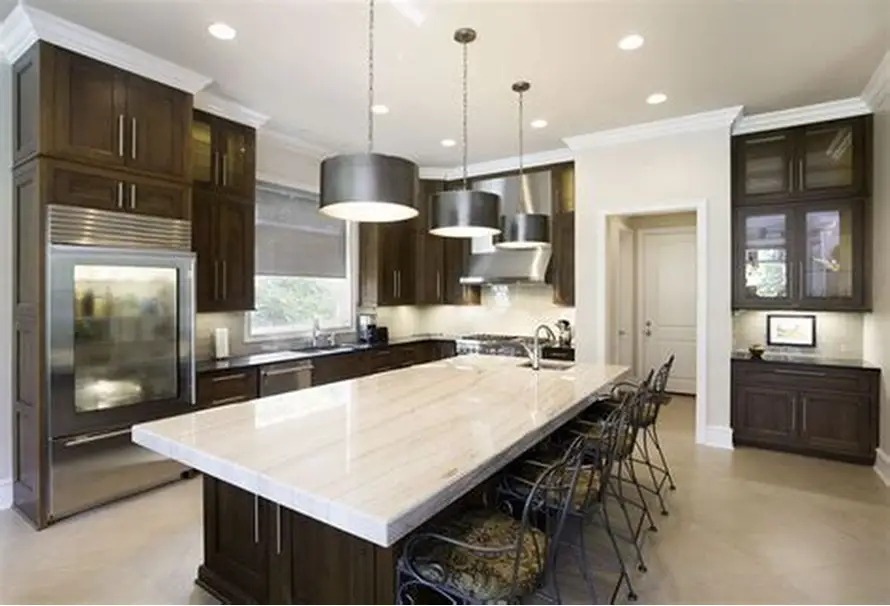Introduction: The Onion-Layer Mystery of Granite
When most people think of granite stone, they picture a solid, unyielding block—whether as a polished kitchen countertop or a towering mountain face. However, in nature, large granite boulders can sometimes peel away in concentric layers, much like an onion. This fascinating geological phenomenon is known as spheroidal weathering.
In this article, we’ll explore what causes granite to form layers, the geologic conditions behind it, and how understanding granite’s structure helps us appreciate its strength and versatility—both in the Earth’s crust and in your home.

Granite Basics: From Magma to Solid Stone
Before we can understand why granite sheds layers, it’s important to know how granite forms in the first place.
Granite is an intrusive igneous rock—meaning it forms when silica-rich magma cools slowly beneath the Earth’s surface, allowing large crystals of quartz, feldspar, and mica to grow. This gives granite its coarse-grained texture and durability.
For more on granite’s formation, see:

What Is Spheroidal Weathering?
Spheroidal weathering is a type of chemical and physical weathering that causes angular granite blocks to become rounded and layered. Over time, outer layers peel away, revealing smoother, more spherical shapes.
The Process in Three Steps:
- Cracks and Joints
Natural fractures—called joints—form in the granite due to tectonic stresses or cooling contraction. - Water and Chemical Action
Rainwater, slightly acidic from dissolved CO₂, seeps into these cracks, reacting with minerals (especially feldspar), altering them into clays. - Layer Peeling
Chemical alteration occurs most intensely near the surface of the block, weakening the outer layers. These layers flake off in curved sheets, much like peeling an onion.
Why Granite Is Susceptible to Onion-Like Layers
While granite is one of the most durable natural stones, several characteristics of granite make it vulnerable to spheroidal weathering:
- Joint spacing: Blocks with closely spaced fractures weather faster.
- Mineral composition: Feldspar minerals are prone to hydrolysis, which accelerates surface weakening.
- Water accessibility: More exposure to moisture speeds up weathering.
Granite’s Journey: From Mountain to Countertop
Granite’s durability is why it remains a top choice for home design. The Aardwolf granite countertop collection offers premium slabs in a range of best Aardwolf granite colors. These slabs—transported safely with a kerb stone for edge protection—are cut, polished, and sealed to prevent the very weathering nature inflicts outdoors.
If you’re comparing materials, check out:
- What’s the difference between quartz and granite countertops?
- Are granite countertops cheaper or more expensive than quartz?
Preserving Granite Indoors
Unlike outdoor granite, indoor white granite countertops and black granite countertops rarely face spheroidal weathering. However, maintenance is still important:
- Clean granite countertops regularly with pH-neutral cleaners.
- Sealing granite every 1–3 years prevents staining.
- Repairing chips in granite promptly preserves structural integrity.
- Polishing granite surfaces keeps them looking showroom-ready.
- Removing stains from granite ensures lasting beauty.
Natural vs. Engineered Granite
While natural granite can weather over thousands of years into rounded boulders, engineered granite—a composite of crushed stone and resin—is less prone to such changes. However, both offer long-term durability when properly maintained.
The Bigger Geological Picture
Spheroidal weathering isn’t unique to granite, but granite’s mineral makeup and joint patterns make it a prime candidate. Over millions of years, a sharp-edged granite block can become a smooth, layered spheroid—showing us that even the toughest stones yield to nature’s persistence.
Conclusion: From Nature’s Onion to Your Kitchen
The onion-like layers in large granite blocks are a direct result of spheroidal weathering, a slow and patient combination of physical and chemical forces. Whether granite is sitting atop a windswept hill or shining in a modern kitchen, it tells the same story: beauty shaped by time.
From the Aardwolf premium granite slabs to understanding the granite geology and composition, the journey of granite—from magma to layered weathered boulder—is one of Earth’s most fascinating transformations.

